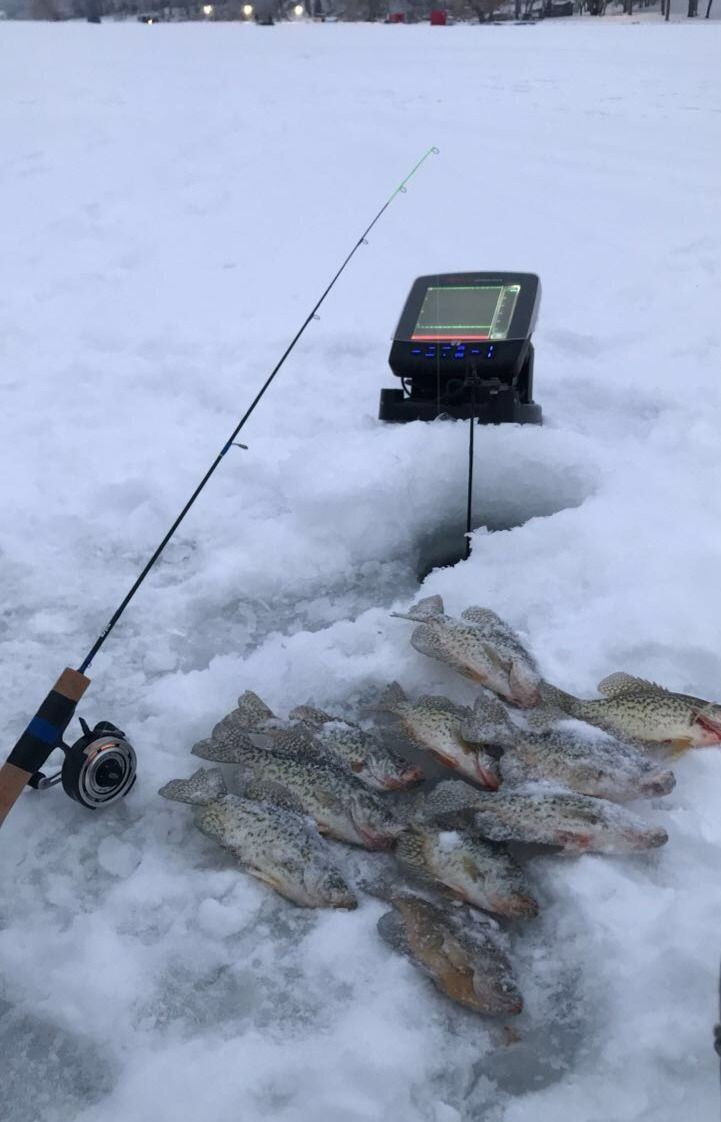Slab Specifics
- North Dakota Wildlife Federation

- Jan 25, 2021
- 3 min read
Crappies through the ice remain one of my favorite winter angling pastimes. While slightly more mysterious in their ways than other panfish, when found they can provide fast action and teach anglers a lot about timing, tackle choices and tactics. What follows are some tips to turn the attention of winter slabs and add to the on-ice excitement.

A Time to Every Water
For several winters, I regularly fished three lakes for crappies: a crystal clear shield style lake, a swampier and more stained lake just across the road from the former, and a horseshoe-shaped water with a slight alkaline stain a few miles down the road. What I found in terms of timing the crappies, was that each water was different as to when fish would get active and how long they would stay active. On the clear lake, it was a dusk bite that started as soon as the sun hit the tops of the pine-and-popple forests which bordered the body and subside about an hour after complete darkness. On the muddier
lake, they’d fire up as darkness set in and would stay on the bite until an angler decided to go home. For the horseshoe lake, it was an all-day thing with the dingier water allowing schools to roam the basin and bite as they pleased.
What each lake taught me is that crappies under the ice on different waters have different feeding activity levels, and what happens on one might not necessarily happen on the other. Learning to time the winter bite on each lake was key to putting fish on the ice. With each hardwater season, I gained more knowledge on the trio of waters and learned to unlock the secrets of their speckled fish. While low light conditions usually provide a good starting point for determining when crappies are most active, do not overlook timing opportunities which may be unique to a particular water, or even a small part of it.
Forage Focus
In summer, any minnow-imitating bait will entice a bite from a crappie. A flash or marabou jig, a small crankbait, or a jig-and-twister combo is all but guaranteed as the aggressive panfish chase after their primary prey. In winter however, the options are more varied as panfish pick off whatever’s available as the forage base shrinks and cold-water lethargy may impact their feeding. Thus, having smaller offerings to represent midge larva, aquatic nymphs and worms while still hanging on to those minnow imitators can help catch more crappies through the ice.
Small jigs tipped with maggots, waxworms or thin plastics imitate those tinier morsels of food while a selection of spoons with flash, color and even some glow attributes can help match minnows crappies feed on. Having one rod rigged with a small spoon – say one to two inches in length – and another with a smaller option requiring a bit of finesse and a sensitive tip or spring bobber, will help cover the spectrum of stuff crappies key in on for food in the winter.
Looking Up
Call crappies the ultimate optimist, because with their large, front-mounted eyes, things are always looking up. All puns aside, a school of feeding slabs will generally rise to a bait as their field of view best detects those items in front of and slightly above them. For this reason, keep track of where crappies are coming in through the water column with a sonar unit, and lay out a lure presentation at a point about a foot above where fish seem most active.
With smaller lures, keep the action subtle with slight hops of the rod tip and gentle wiggles to imitate an underwater insect or non-fish creature. As a crappie rises, stop the movement altogether and watch the tip or spring bobber to register a bite. Sometimes a slight squeeze or tap of the rod handle will provide the last little movement necessary to convince a crappie to bite. Similarly for spoons, when no fish are on the screen, work them more aggressively to send out some flash and vibration, but as fish show up and enter the middle of the sonar cone, ease off with just a few twitches and slight jumps to trigger a bite.
Keeping lake specifics in mind for resident crappies, along with noting the variety of food they key in on during winter and how they react to the motion of the real thing, and your lures, you’ll be able to pattern these favorite panfish in just a few trips on the ice and build on that knowledge winter-after-winter. As a result, you’ll find splendid fishing for specks and likely a few slabs to add to your winter memories.
By: Nick Simonson

Comments